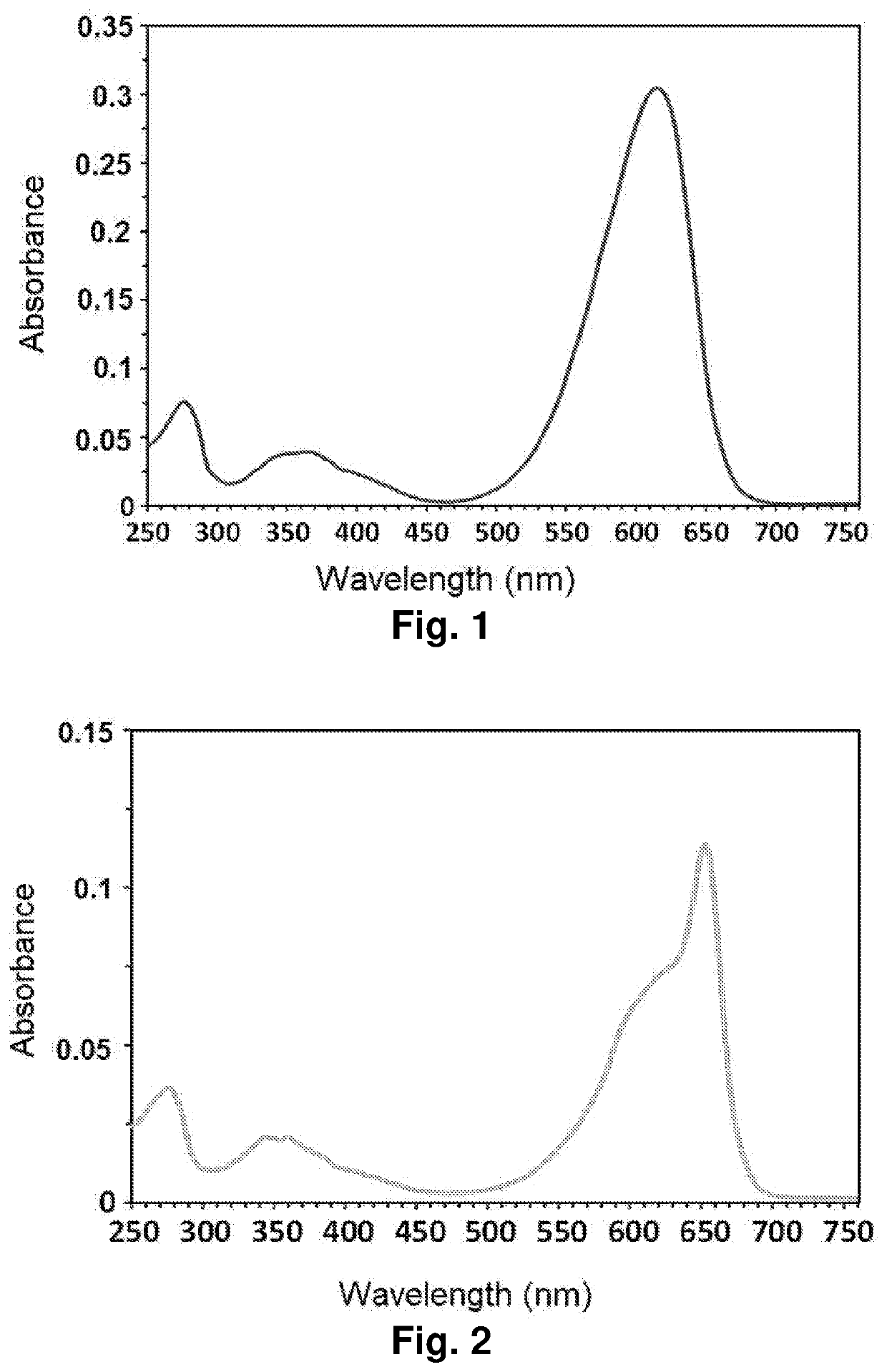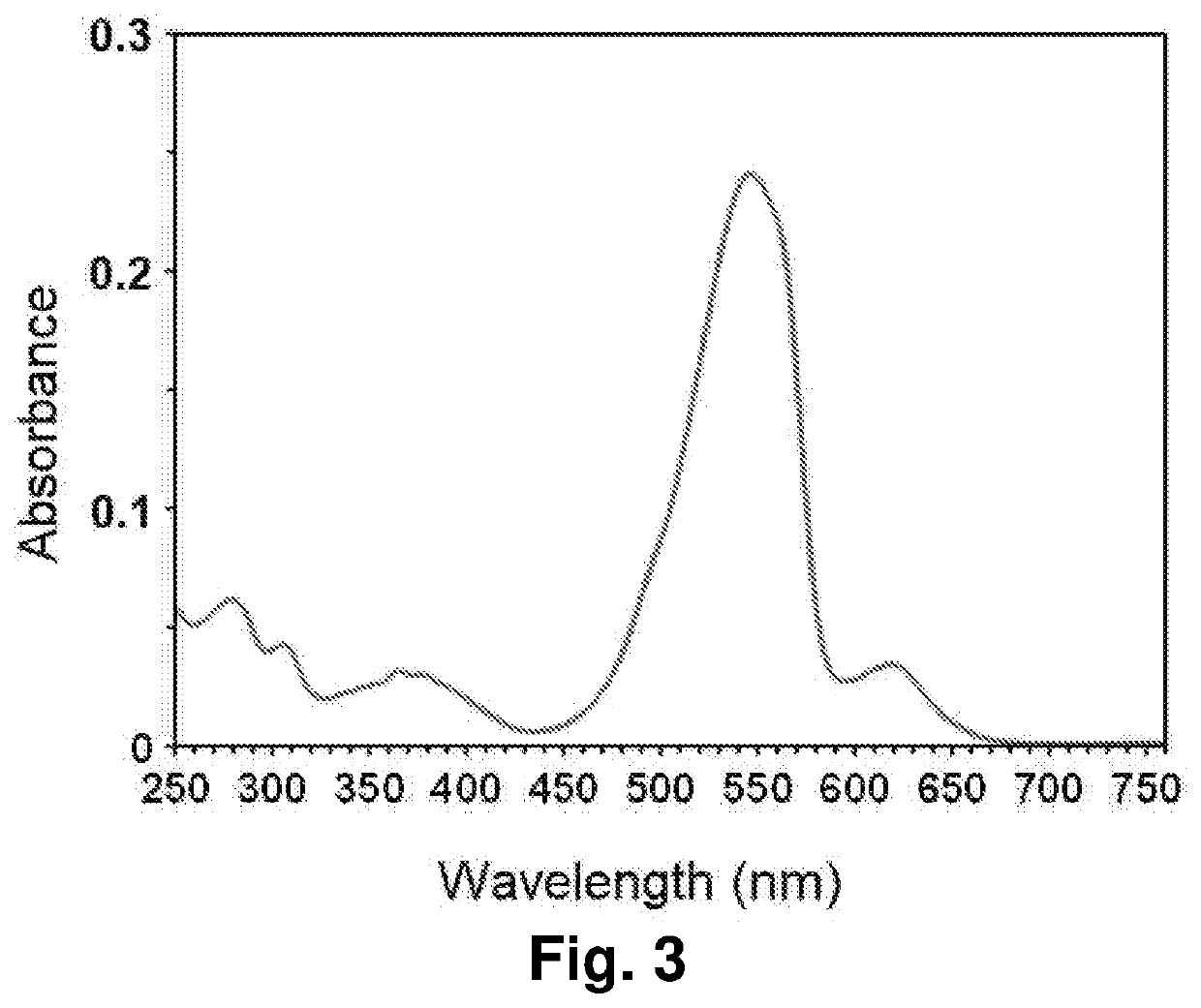Process for the separation and purification of phycobiliproteins
- Summary
- Abstract
- Description
- Claims
- Application Information
AI Technical Summary
Benefits of technology
Problems solved by technology
Method used
Image
Examples
example 1
[0043]Purification of Phycocyanin from Aqueous Extracts of Arthrospira platensis (Spirulina) Biomass
[0044]A crude phycobiliprotein extract was obtained by suspending the freeze-dried A. platensis biomass in an aqueous solution of 100 mM NaCl (140 mg of Spirulina in 11 mL of solution). The suspension was kept at 4° C. for 24 hours, then centrifuged for 45 minutes (12000 rcf, T=10° C.). The supernatant containing phycocyanin (PC) and allophycocyanin (APC) (hereinafter “crude extract”) was recovered and stored at 4° C.
[0045]The chromatographic purification process on the crude extract was performed by using a vacuum glass device for microfiltration and a PVDF microfiltration membrane, carrying out two consecutive chromatographic cycles. The second cycle has allowed to obtain phycocyanin with a degree of purity of analytical grade.
[0046]More specifically, a glass vacuum flask for microfiltration was assembled with a hydrophilic PVDF membrane (Durapore®, with an average pore size of 0.45...
example 2
[0050]Purification of Phycocyanin from Aqueous Extracts of Arthrospira platensis (Spirulina) Biomass
[0051]The crude extract of phycobiliproteins was obtained from fresh biomass of A. platensis. An aliquot of cultivation of biomass in water (40 mL) was centrifuged for 10 min (12,000 rcf, temperature=10° C.) and the supernatant eliminated. The cyanobacteria pellet was suspended and washed with 18 MO Milli-Q pure water, then centrifuged for 10 min (12,000 rcf, temperature 10° C.) and the supernatant eliminated. The pellet was resuspended in 10 mL of a NaCl aqueous solution 100 mM and subjected to three freeze-thaw cycles (in each cycle the suspension was kept at −20° C. for 2.5 hours and then thawed in a water bath at 20° C.). After adding further 10 mL of NaCl aqueous solution 100 mM (20 mL in total) the suspension was sonicated four times for 60 s (power 75%, pulse 60%, sonicating tip S2, Hielscher Ultrasonic Processor UP200S, 200 W, 24 kHz) in a bath of water and ice, with an interv...
example 3
[0056]Purification of Phycocyanin from Aqueous Extracts of Arthrospira platensis (Spirulina) Biomass
[0057]A crude extract of phycobiliproteins was obtained as described above in Example 1. The purification process on this crude extract was performed using a syringe for microfiltration and a filter for syringe with a membrane in hydrophilic PVDF (Durapore®, with an average pore size of 0.45 μm, 33 mm diameter, code SLHV033RS). Using this device, the following two cycles of chromatographic purification were carried out:[0058]cleaning cycle: the filter was washed with 5 mL of deionized water and then conditioned with 3 mL of ammonium sulfate 0.6 M, then it was used to filter a 2 mL aliquot of crude extract in ammonium sulfate 0.6 M with a content total phycobiliproteins (PC+APC) of about 0.31 mg. The solution was filtered and the permeate was collected in a 10 mL glass bottle. The filter was then washed with 1 mL of ammonium sulfate solution 0.6 M, collecting the solution in the same b...
PUM
| Property | Measurement | Unit |
|---|---|---|
| Fraction | aaaaa | aaaaa |
| Fraction | aaaaa | aaaaa |
| Fraction | aaaaa | aaaaa |
Abstract
Description
Claims
Application Information
 Login to View More
Login to View More - R&D
- Intellectual Property
- Life Sciences
- Materials
- Tech Scout
- Unparalleled Data Quality
- Higher Quality Content
- 60% Fewer Hallucinations
Browse by: Latest US Patents, China's latest patents, Technical Efficacy Thesaurus, Application Domain, Technology Topic, Popular Technical Reports.
© 2025 PatSnap. All rights reserved.Legal|Privacy policy|Modern Slavery Act Transparency Statement|Sitemap|About US| Contact US: help@patsnap.com


